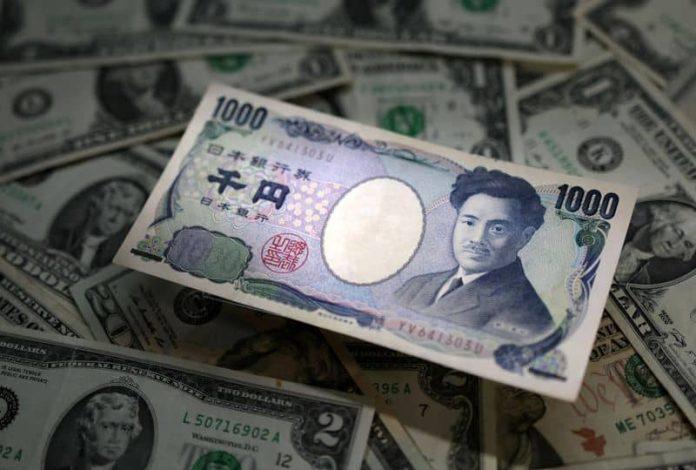By Rae Wee
SINGAPORE (Reuters) – The yen fell on Monday, extending losses from a volatile session at the end of last week after the Bank of Japan (BOJ) loosened its grip on interest rates, though looked it set to end July with its first monthly increase since March.
Elsewhere in Asia, data on Monday showed China’s manufacturing activity fell for a fourth straight month in July, though sentiment was buoyed by news of further measures to spur the country’s sputtering economic recovery.
The yen fell about 0.5% to 141.92 per dollar in Asia trade, though looked set to end the month with a more than 1.5% gain.
The Japanese currency went into a tailspin on Friday as traders tried to determine the implications of the BOJ’s move to maintain ultra-low rates while making its bond yield curve control (YCC) policy more flexible and loosening its defence of a long-term rate cap at the conclusion of its policy meeting.
The dollar eventually ended the Friday session with a 1.2% gain against the yen, though that was after it had slid 1% to a session-low of 138.05 yen.
“The BOJ threw a curve ball into the market … with its cosmetic change to YCC – in essence, it was a brilliant move by the central bank, and they’ve managed to bridge the volatility that would come with a straight change to a -/+ 1% range in the YCC band,” said Chris Weston, head of research at Pepperstone.
“They’ve given themselves all the flexibility should they wish to tighten policy in the future without tidal waves in global bond markets.”
The move could also have seismic implications for global money flows, since a cheap yen that has been inexpensive to borrow has been a mainstay of capital market funding for years and it now faces upward pressure from rising Japanese yields just as global rates seem to peak.
The offshore yuan, meanwhile, edged marginally higher and last traded at 7.1495 per dollar, drawing some support from an announcement from China’s State Council on Monday on issuing measures to restore and expand consumption in the automobile, real estate and services sector.
Over the weekend, the country’s biggest cities including Beijing and Shenzhen also said they would implement measures to better meet the needs of homebuyers, though did not provide details.
“Although the actual implementation (has) still yet to materialise, the risk sentiment appears to continue to hold up well,” said OCBC rates strategist Frances Cheung.
The buoyant mood also lifted the Australian and New Zealand dollars, which are often used as liquid proxies for the yuan.
The Aussie rose 0.5% to $0.6681, while the kiwi jumped 0.7% to $0.61955.
FED HIKES DONE?
The U.S. dollar was headed for a monthly loss on the prospect that the Federal Reserve’s aggressive rate-hike cycle – a key driver of the dollar’s strength – could have concluded with last week’s 25-basis-point increase.
The dollar index was last 0.22% higher at 101.82, but was eyeing a monthly decline of roughly 1%, extending its loss to a second straight month.
Data on Friday showed that the annual U.S. inflation rate rose at its slowest pace in more than two years in June, with underlying price pressure receding, easing pressure on the Federal Open Market Committee (FOMC) to continue raising rates.
“All of the data continues to support a ‘Goldilocks’ scenario in the U.S. economy,” said currency strategist Carol Kong at Commonwealth Bank of Australia (OTC:CMWAY) (CBA).
“In the near term, the dollar might be heavy, weighed down by the market’s view that the FOMC is done with its tightening cycle.”
The euro fell 0.05% to $1.10065, but was eyeing a monthly gain of about 1%. Last week’s European Central Bank policy meeting similarly raised the possibility of a rate pause in September.
Sterling edged marginally higher to $1.2850 ahead of the Bank of England’s (BoE) policy meeting this week, where expectations are for a quarter-point rate hike.
“Even if the global monetary tightening has broadly run its course by now, the regional differences in growth and inflation dynamics will provide for some variations in the policy path,” said analysts at Barclays (LON:BARC).
“The BoE’s decision will be on a knife’s edge, but we stick to our forecast for a 50bp hike.”



















